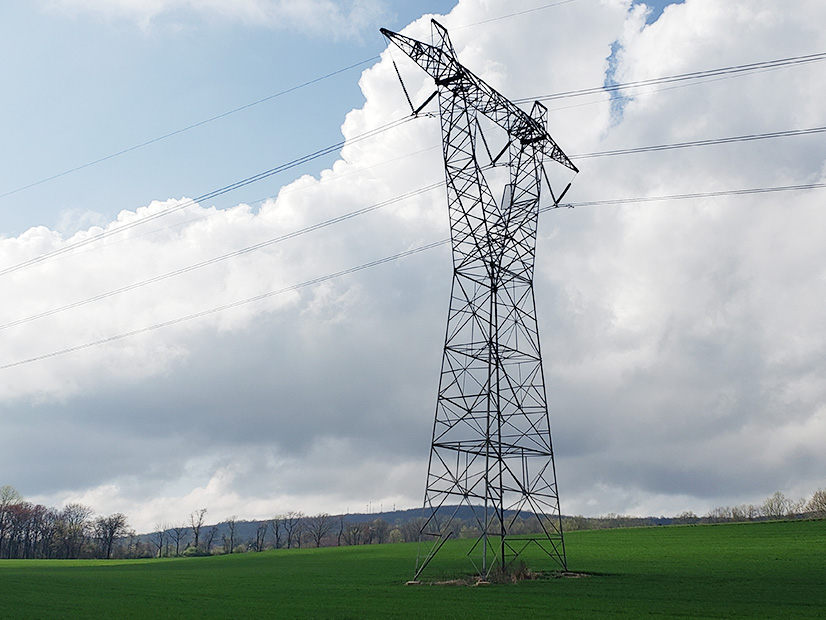The U.S. electric sector is undergoing a dramatic transformation that will bring significant benefits to consumers and stakeholders — and new transmission will be key to unlocking them, FERC Chair Richard Glick said Tuesday.
Speaking at the first session of PJM’s interconnection policy workshop, Glick told RTO members that the biggest challenge to the clean energy transformation is determining the best path forward.
Glick believes that transmission planning will play such a key role in the green energy revolution that he’s bumping it to the top of the commission’s agenda.
“I think we’re going to be spending a significant amount of the commission’s time in the next year on transmission reform issues,” Glick said.
“It’s no secret” that the grid will increasingly rely on renewable resources as a growing number of states look to lower carbon emissions, he said. Many of the best locations for solar and wind are found in locations far from load centers, requiring a “robust” transmission grid.
While the FERC chair is a “big believer” in the role of distributed energy resources in the transition to renewables, he said there’s no way to address ambitious state and federal carbon-reduction goals without addressing the transmission system.
“We’re going to have to access those remotely located renewable resources, and transmission is certainly the way to unlock those resources,” Glick said.
FERC will seek to take a lead role in transmission coordination because of its “significant jurisdiction” in regulating the sector, Glick said, while lending its expertise to the Department of Energy in coordinating projects like the offshore wind poised to be installed along the East Coast.
Glick said transmission planning is a difficult subject to address because of conflicting views among stakeholders, along with legal, policy and regulatory constraints. But he hopes that FERC will outline a plan of action before the end of summer for moving forward on transmission.
“It’s a very significant part of my agenda, and I think we really need to give it all the thought we can, as it’s an extremely important part of the transformation to the clean energy future,” Glick said.
Key Transmission Planning Issues
Glick said the industry must still “unlock the process” of interregional transmission planning. At the same time, the commission must also figure out the “intra-regional” transmission planning process, helping to anticipate what kind of generation will be built in the future. He said it will be important to get a holistic picture of the generation mix in a region instead of focusing on one or two generating projects at a time.
In terms of planning, Glick said FERC must ensure that grid operators are closely examining not only the growing number of projects in their interconnection queues, but the locations of those projects as well, finding ways to better integrate the planning and interconnection queue processes.
Cost allocation will also play an important role in the commission’s agenda, Glick said, calling it a “very tricky” subject. FERC regulations have generally been aligned with allocating costs in a manner roughly commensurate with the benefits, Glick said, but it can be difficult determining exactly who are the beneficiaries and then allocate costs correctly. FERC must look beyond the “traditional” theory of beneficiaries, he said, pointing to other ways stakeholders can benefit from a new transmission project such as through reduced congestion and improved power flows. The commission must also consider reliability improvements as a benefit of new transmission.
Glick said FERC is also looking to address participant funding of network upgrades, saying it is “perplexing” that a generation owner building a new power plant has to pay the costs for a network upgrade while those coming later in the queue can benefit from the upgrade without having to pay for it.
“FERC needs to revisit our participant funding policies, and that’s going to be an important debate as we move forward,” he said.
Glick was asked about ways the commission can accelerate the interconnection process as the 2030 deadline for many state carbon and clean energy goals draws nearer.
“Time is of the essence” in planning to achieve environmental goals, he said, and FERC must “expedite the process” to make it happen, including modifying the interconnection process along with other regulatory processes.
PJM Perspective

PJM CEO Manu Asthana said it was important for Glick to give remarks during the first stage of the interconnection workshops. He said Glick’s experience on both the regulatory and legislative sides of policies gives the commission a chance to take steps in reforming the interconnection process.
Asthana said there’s no single answer to addressing interconnection issues, but it’s a “series of tradeoffs” to make the necessary changes. He said stakeholders must start thinking about the correct tradeoffs to reform the interconnection process.
“It’s very clear to me that we need to do some things differently,” Asthana said. “And some of those things may require structural changes as opposed to tweaks.”



